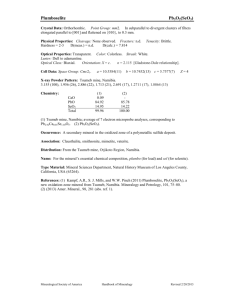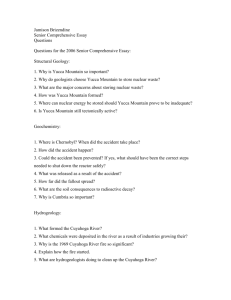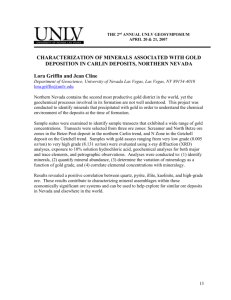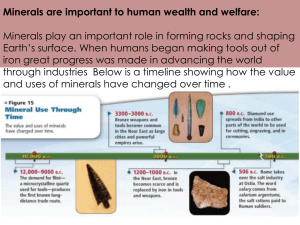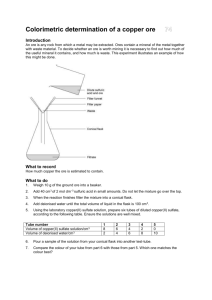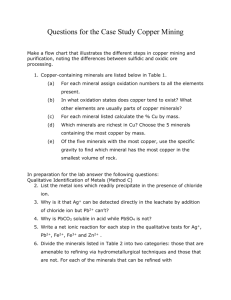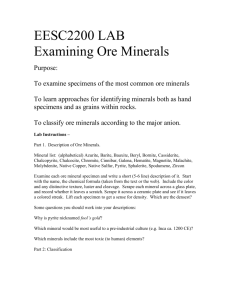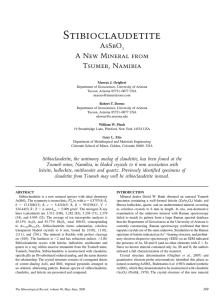BrizMineralogy
advertisement
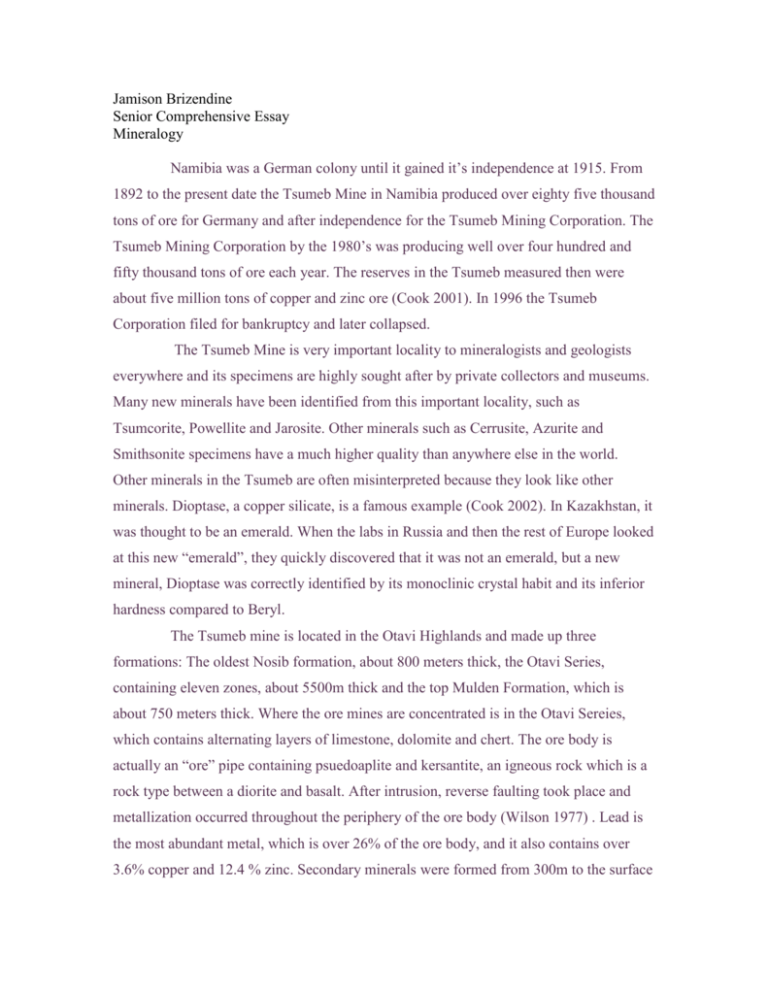
Jamison Brizendine Senior Comprehensive Essay Mineralogy Namibia was a German colony until it gained it’s independence at 1915. From 1892 to the present date the Tsumeb Mine in Namibia produced over eighty five thousand tons of ore for Germany and after independence for the Tsumeb Mining Corporation. The Tsumeb Mining Corporation by the 1980’s was producing well over four hundred and fifty thousand tons of ore each year. The reserves in the Tsumeb measured then were about five million tons of copper and zinc ore (Cook 2001). In 1996 the Tsumeb Corporation filed for bankruptcy and later collapsed. The Tsumeb Mine is very important locality to mineralogists and geologists everywhere and its specimens are highly sought after by private collectors and museums. Many new minerals have been identified from this important locality, such as Tsumcorite, Powellite and Jarosite. Other minerals such as Cerrusite, Azurite and Smithsonite specimens have a much higher quality than anywhere else in the world. Other minerals in the Tsumeb are often misinterpreted because they look like other minerals. Dioptase, a copper silicate, is a famous example (Cook 2002). In Kazakhstan, it was thought to be an emerald. When the labs in Russia and then the rest of Europe looked at this new “emerald”, they quickly discovered that it was not an emerald, but a new mineral, Dioptase was correctly identified by its monoclinic crystal habit and its inferior hardness compared to Beryl. The Tsumeb mine is located in the Otavi Highlands and made up three formations: The oldest Nosib formation, about 800 meters thick, the Otavi Series, containing eleven zones, about 5500m thick and the top Mulden Formation, which is about 750 meters thick. Where the ore mines are concentrated is in the Otavi Sereies, which contains alternating layers of limestone, dolomite and chert. The ore body is actually an “ore” pipe containing psuedoaplite and kersantite, an igneous rock which is a rock type between a diorite and basalt. After intrusion, reverse faulting took place and metallization occurred throughout the periphery of the ore body (Wilson 1977) . Lead is the most abundant metal, which is over 26% of the ore body, and it also contains over 3.6% copper and 12.4 % zinc. Secondary minerals were formed from 300m to the surface and a second oxidation zone from 800m to about 900m. These oxidation zones have large amounts of sulfides and enriched copper deposits (Wilson 1977). Fracturing, brecciation, and intrusion of psuedoaplite formed the ore pipe. The Tsumeb is still an important resource, for its large copper, zinc and lead deposits. Over five billion dollars from the ore deposits have been yielded from the copper and zinc ores. Other fabulous specimens from Tsumeb include, Azurite, Malachite, Cerrusite, Chrysocolla, Mimetite, Wulfenite, Rosasite, Duftite, and several other rare carbonates, silicates, and oxides. New minerals that were discovered at Tsumeb include Ankerite, Corkite, Powellite, Jarosite and Shattuckite in hand sample quantities. The mine was shut down in 1996 and reopened in 2001. For the study of mineralogy the Tsumeb has provided fifty-two new minerals, and forty of which occur in this region alone. Over two hundred and forty seven minerals have been identified making it a valuable research locality.
